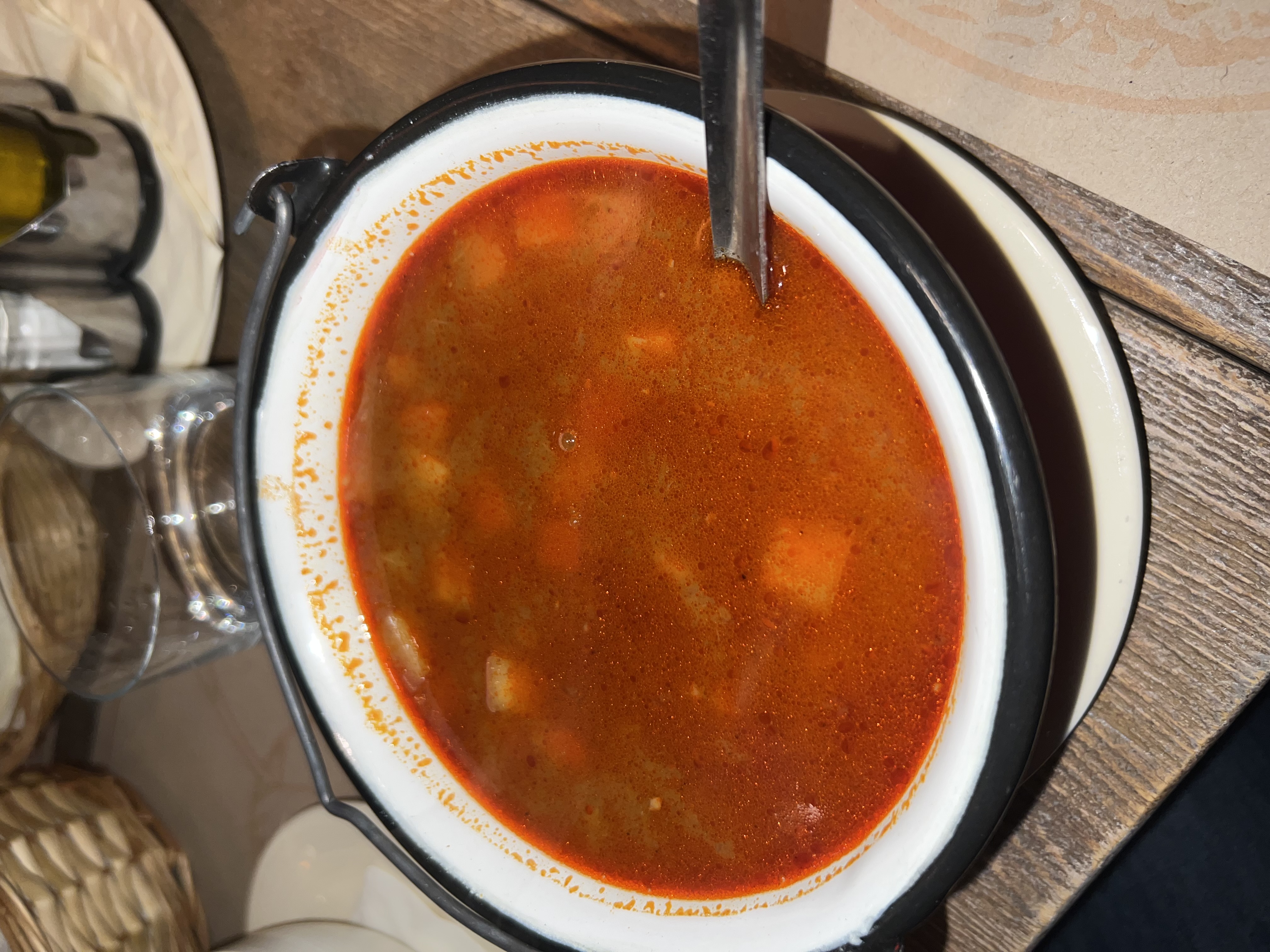
Chicken paprikash or paprika chicken is a popular dish of Hungarian origin and one of the most famous variations on the paprikás preparations common to Hungarian tables. The name is derived from the ample use of paprika, a spice commonly used in Hungarian cuisine. The meat is typically simmered for an extended period in a sauce that begins with a paprika-infused roux. The édes nemes (sweet paprika) is the preferred kind of paprika; it adds a rosy color as well as flavor. Sometimes olive oil and sweet red or yellow peppers and a small amount of tomato paste are used. The dish bears a "family resemblance" to goulash, another paprika dish.

Goulash (Hungarian: gulyás), is a soup or stew of meat and vegetables seasoned with paprika and other spices. Originating in Hungary, goulash is a common meal predominantly eaten in Central Europe but also in other parts of Europe. It is one of the national dishes of Hungary and a symbol of the country. Its origin traces back to the 9th century to stews eaten by Hungarian shepherds. At that time, the cooked and flavored meat was dried with the help of the sun and packed into bags produced from sheep's stomachs, needing only water to make it into a meal. Earlier versions of goulash did not include paprika, as it was not introduced to Europe until the 16th century.

Kürtőskalács (or Hungarian Chimney Cake) is made from sweet, yeast dough (raised dough), of which a strip is spun and then wrapped around a truncated cone shaped baking spit, and rolled in granulated sugar. It is roasted over charcoal while basted with melted butter, until its surface cooks to a golden-brown color. During the baking process the sugar stuck on the kürtőskalács caramelises and forms a shiny, crispy crust. The surface of the cake can then be topped with additional ingredients such as ground walnut or powdered cinnamon.